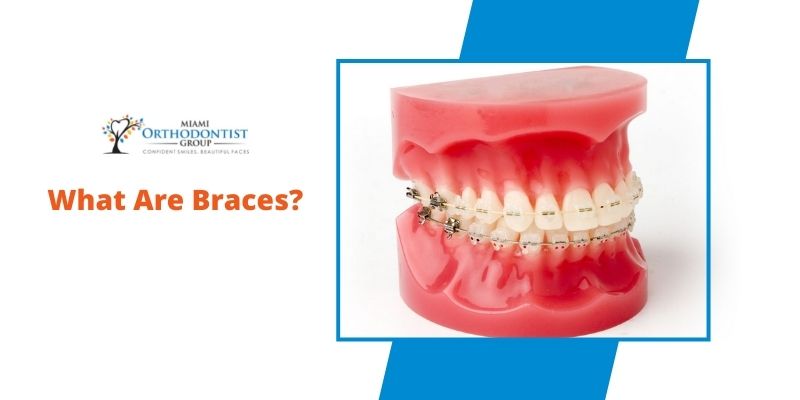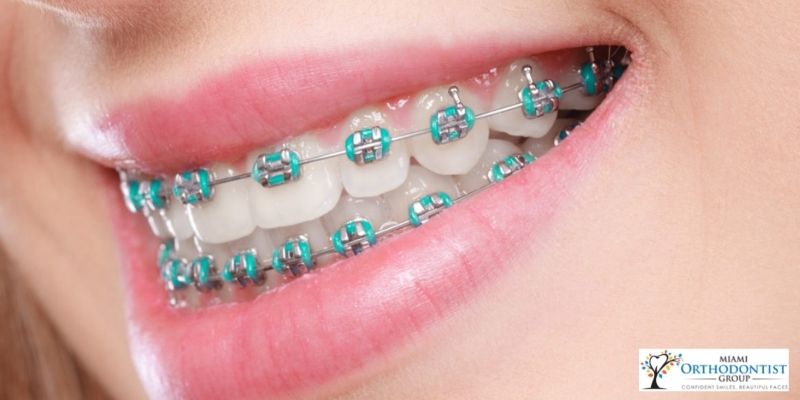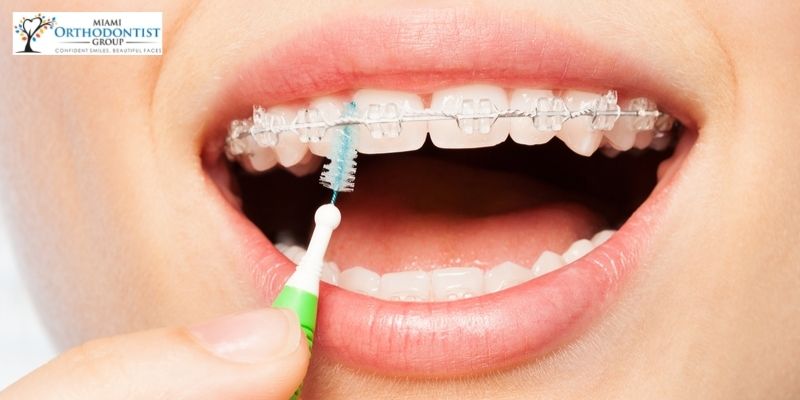Dental braces come from a unique practice of dentistry, known as orthodontics. This particular branch of dental medicine was created to help treat patients with misaligned teeth problems.
Everyone has a different mouth and jaw type, and there are some groups of people with different bite problems that must be corrected individually. Orthodontic cases are bite misalignments or malocclusions, which brings about problems like underbites, crowded teeth, and overbites.
These cases are the reasons for needing orthodontic treatments, and they can cause patients to lose their confidence or become more self-conscious. These problems can affect speech, smile, and eating. Getting orthodontic treatment can help fix it.
Before booking an appointment with an orthodontist, it is wise to gather knowledge on what to expect from getting braces, what type of braces would work well for you and how you should care for the braces until your treatment is over.
What Are Braces?

Braces are devices designed for the teeth. An orthodontic specialist helps in attaching them to the teeth of patients with misalignment problems to change the position of their teeth. Braces are effective in correcting any abnormal bite and straightening crooked teeth.
When a patient has crowded teeth, excess spaces between the teeth or other bad bites, it can affect their speaking and eating. It can also cause jaw problems, gum diseases, and tooth decay. Getting braces and solve these problems.
It is common to see braces on the teeth of young children and teenagers. This treatment should be administered to children who have already started growing permanent teeth. Treatment can begin between the ages of 8 to 14 years.
However, all patients are different and the length of their treatment may differ according to how serious their dental problem is. Also, the type of dental braces used on a patient will determine how quickly they will progress in their treatment.
Two parts comprise braces, the ceramic brackets or small metal, which are affixed to the teeth, and the archwires that are also metal made to move the teeth to a new position.
During treatment, your orthodontist passes metal archwires through spaces in the ceramic brackets and adjusts the metal to shift your teeth to another position. Hooks and elastic bands may also be affixed to the ceramic brackets during your treatment.
It is generally safe to attach and adjust braces to the teeth, but it can also cause a few complications in the mouth, especially during the first few weeks of treatment. Patients can suffer tender and sore teeth from the movement of the metal.
Types of Braces
There are a few types of braces produced to solve problems related to misaligned teeth. Depending on your bite issue, an orthodontic specialist will recommend the right treatment for you. Also, you may decide to choose a treatment based on your budget, treatment goal, and preference.
The different brace types are as follows:
Traditional Metal Braces

These are some of the most common orthodontic braces designed to realign teeth. Most people consider these braces as conventional and classic.
This type of brace moves the teeth to a good position using metal brackets affixed to the teeth. The teeth are surrounded by a metal archwire that gradually repositions the teeth.
For some braces, an elastic tie is used to support the repositioning of the teeth while self-binding braces are designed with a custom-made clip that is used instead of an elastic tie.
Ceramic Braces
Just like traditional metal braces, they have the same appearance. The difference between the two braces is that ceramic braces have a clear bracket to match the teeth of the patient wearing them.
These braces provide the same treatment as the traditional metal braces, but the metallic mouth look that discourages some patients to get braces treatment does not happen with these braces.
Lingual Braces
Dental experts explain the term “Lingual” surface to mean the inner part of the teeth. Lingual braces are positioned behind the teeth, against the tongue. They are designed with metals, just like traditional braces.
Damon Braces
These are advanced options for braces designed without the use of metal ties or elastic bands, as it is common with traditional braces.
There are facts on Damon braces that state that pains are reduced, and there may be no need for too much adjustment as compared with the traditional model. Damon braces come in both clear and metallic versions.
Clear Aligners (Invisalign)
Clear aligners are also known as Invisalign. They are nearly invisible to the eye and are considered the most efficient option out of all the other types of braces. They can be removed and repositioned back in, and they have a better aesthetic appeal.
Invisalign is custom-made to fit the mouth of an individual patient. Patients are expected to wear an aligner for about 1-2 weeks before replacing it with another aligner until the treatment is over. Invisalign treatment slowly moves the teeth to a perfect position.
How to Care for Your Braces
Patients wearing braces must be careful with what goes into their mouth during their treatment. Eating certain food can break the braces or disrupt treatment.
Food such as sticky sweets, gum, and popcorn, should be avoided as it can pull off a bracket or cause the wires to poke out from their actual position.
Also, food such as soda, bread, carb-loaded treats, pasta, and sugar rushes can accumulate in the teeth and get trapped with the braces. They should be avoided as this can cause decay.
It is better to eat something that will not be hard to clean off the teeth and braces. Eating diets like keto and paleo is healthy for your oral health. This diet can help reduce gum and teeth diseases.
Patients wearing aligners should remove them before brushing and flossing. Toothpaste can cause them to discolor or become foggy in appearance.
What to Expect After Getting Braces?
Having a wide knowledge of what to expect from using braces to correct your bite can help you become more confident after getting your treatment, and it will set you back to your normal life as quickly as possible.
First, your jaw, gum, and teeth may feel tender or sore for a few days after your first braces treatment. When your braces are adjusted by the orthodontist, you will experience pain since the braces and archwire function by mounting pressure to the teeth by loosening them for a more effective repositioning.
Conclusion
Orthodontic braces are placed on the teeth to realign faulty bites. If you have bite issues, getting braces will boost your confidence and improve your smile. Make sure you get braces that suit your budget, personal preference, and treatment plan.
Consult an orthodontic specialist and get the best mold for your mouth. If you experience any discomfort after getting braces, your orthodontist can recommend a topical medication for your pain to be relieved.
You can explain your discomfort to your orthodontists if the pain continues even after a few days or a week of getting new braces or ask foran adjustment so that he or she can check for other complications.


